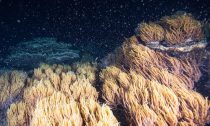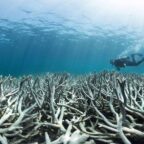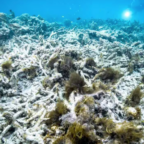
The Great Barrier Reef exploded with life over the weekend thanks to the annual mass coral spawning and early reports suggest it was the biggest event in recent years. The coral spawning, which typically occurs on the Reef in the week following the November full moon, sees coral polyps simultaneously release egg and sperm bundles into the ocean for fertilisation giving rise to millions of next-generation coral babies. Reef Bio Research Manager at Quicksilver Port Douglas, Russel Hore, said coral spawning is a significant event for the reef.
“It is vitally important that it occurs to get genetic diversity across the corals,” he said.
“It also allows for species distribution around the reef, because corals can’t walk around so this is the best way different corals can move around the reef and settle in spare spaces.”
Mr Hore added that the conditions in the lead up to the spaning have been ideal even allowing for daytime spawning, which is unusual as the event often occurs at night.
“We are pretty confident that we may see a second spawning in December,” he said.
Marine biologists from Calypso Productions, Stuart Ireland, spent the weekend on Sunlover Moore Reef Marine Base off Cairns witnessing both hard and soft corals spawn overnight.
Mr Ireland, who has been filming the coral spawn every year since 1996, said it was one of the best displays he has seen in years.
“The corals are really looking spectacular since the bleaching events of 2016 and 2017,” he said.
Mr Ireland said the variety of hard and soft corals releasing eggs and sperm into the water was astounding.
“There was coral spawn everywhere last night. It was like a grey haze with beautiful pink bundles going up; it was a magical night,” he said.
“It’s a testament of how resilient the Great Barrier Reef really is.
“We expect to see more pressures in the future, but the Great Barrier Reef’s size, complexity and huge biodiversity makes it a very strong ecosystem.
“The reef has shown us that she is not lying down, she is doing extremely well and fighting for the future,” he said.
Meanwhile, in conjunction with the spawning, many leaders from across the science, conservation and tourism industries have been working together on projects aimed to mitigate the ever-growing impacts of climate change and help safeguard the Reef’s future.
One such project off the coast of Port Douglas is the Coral Nurture Program which is working to protect high-value reefs.
An initiative of the University of Technology Sydney (UTS) researchers, Associate Professor David Suggett and Dr Emma Camp in partnership with Wavelength Reef Cruises, focuses on long term stewardship and adaptation to help economically valuable reefs stay healthy.
“By utilising existing tourism infrastructure, plus the knowledge, experience and skills of operators and their crew, interventions at tourism sites can be targeted to the exact needs of each location,” Dr Emma Camp said.
Tourism is playing an increasingly important role in the conservation of coral reefs globally, with tour operators uniquely placed to educate visitors of the threats and inspire action to protect them.














Social Profiles